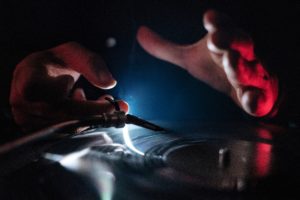 Sampling is a technique used in the music industry which utilises parts of pre-existing recordings in order to create a new music composition. Although sampling has been a common practice and a widely-used method in many modern music productions, its legality under EU law is still to be determined.
Sampling is a technique used in the music industry which utilises parts of pre-existing recordings in order to create a new music composition. Although sampling has been a common practice and a widely-used method in many modern music productions, its legality under EU law is still to be determined.
From the perspective of European copyright law, extracted fragments of sound recordings can amount to infringement of neighbouring rights of phonogram producers and other relevant right holders, namely the right of reproduction. To be sure, some national laws may allow a degree of authorial self-copying as a limitation to copyright claims against sampling. This is, for example, the case for the German concept of ‘free use’ (freie Benutzung), codified in Article 24 of the German Copyright Act. However, at EU level, the closed list of exceptions in Article 5 of the InfoSoc Directive does not include a similar notion. Furthermore, nowhere in EU law is it possible to find a uniform definition of sampling or concrete guidance on how to carry out this practice without running afoul of copyright, while enabling artists’ freedom of creative expression.
In Germany, the tension between copyright and artistic interests arising out of the ambiguous legal position of sampling has played out for almost twenty years in the Metall auf Metall case, which has now been referred to the Court of Justice of the European Union (the CJEU). The dispute has its roots in the copyright claim of the members of Kraftwerk, electronic music pioneers, against Moses Pelham, a music producer, over a two-second sample dated from 1977. The main subject of the three legal proceedings concerned the extraction of a two-second sequence of rhythms from the composition ‘Metall auf Metall’ by Kraftwerk and the inclusion of the rhythm in the song ‘Nur Mir’ (written by Moses and performed by Sabrina Serlur). Kraftwerk claimed that using their sample in a loop and including it in a song constitutes an infringement of their producers’ rights and therefore asked for an injunction against further distribution of the song.
Since 1999, the case has been tried by all judicial instances in Germany. After having occupied the lower courts, the case initially reached the German Federal Court of Justice (I ZR 112/06) (Bundesgerichtshof or BGH) and was subsequently referred back to the Higher Regional Court (Oberlandesgericht). In the second round of the proceedings, the case was appealed once again to the BGH (I ZR 182/11). These decisions were all favourable to the plaintiffs.
In 2012, after a series of unsuccessful attempts, Mr Pelham and others lodged a constitutional complaint (1 BvR 1585/13) against the second decision of the BGH. In essence, the Federal Constitutional Court (Bundesverfassungsgericht) was asked to clarify the extent to which music artists may rely on the right of artistic freedom (Article 24 of the German Copyright Act), while facing a copyright-related claim from phonogram producers. The Constitutional Court criticised the lower instances for not giving sufficient consideration to Mr Pelham’s freedom of artistic expression provided in Article 5(3) of the German Constitution which, in some cases, (‘creation of artistic dialogue’) may indeed outweigh the exploitation interests of phonogram producers under Article 85 of the German Copyright Act. It is within the powers of the Constitutional Court to reverse unconstitutional laws or court decisions, but not to enact or rewrite them. Consequently, the Court decided to set aside all the previous judgments and refer the case back to the BGH.
Although the domestic proceedings assessing the legality of sampling have been ongoing for almost twenty years, there is yet to be a final outcome. Since the provisions on copyright and neighbouring rights are largely harmonised under EU law, it is questionable whether there is room left for the application of national law. For that reason, the BGH decided to seek guidance from the CJEU. The questions referred primarily concern the interpretation of Articles 2(c) of the InfoSoc Directive and 9(1)(b) of the Rental and Lending Directive (2006/115/EC) – on phonogram producers’ rights of reproduction and distribution – and their relation to the concept of sampling, as well as the potential application of the quotation exception (Article 5(3)(d) of the InfoSoc Directive) and the role of the Charter of Fundamental Rights of the European Union.
More specifically, the primary concern of the BGH was to seek guidance on how to determine whether a two-second sample falls within the notion of reproduction in the InfoSoc Directive and, if so, whether the German ‘free use’ exception is compatible with EU law. Furthermore, the BGH wants to know whether sampling fulfils the conditions of the quotation exception, as well as the role of the EU Charter in determining the scope of phonogram producers’ exclusive rights and applicable exceptions.
 The decision of the CJEU in Metall auf Metall should have a significant impact for the digital music industry. In theory, the Court has a number of ways to determine the extent to which unlicensed sampling may constitute a copyright infringement. In doing so, it should take into account different factors relevant to the definition of the practice of sampling under the right of reproduction or the quotation exception, namely the degree of recognition of the original music sample and the possibility of making associations with a previously existing composition. Depending on whether the CJEU interprets the reproduction right and the quotation exception broadly or narrowly, two main outcomes are foreseeable.
The decision of the CJEU in Metall auf Metall should have a significant impact for the digital music industry. In theory, the Court has a number of ways to determine the extent to which unlicensed sampling may constitute a copyright infringement. In doing so, it should take into account different factors relevant to the definition of the practice of sampling under the right of reproduction or the quotation exception, namely the degree of recognition of the original music sample and the possibility of making associations with a previously existing composition. Depending on whether the CJEU interprets the reproduction right and the quotation exception broadly or narrowly, two main outcomes are foreseeable.
Firstly, the CJEU may follow the approach of previous judgments and interpret the reproduction right broadly. This would probably lead to a decision that favours phonogram producers. When considering past judgments like Infopaq, it should come as no surprise if the CJEU rules that the extraction of a sequence no longer than two seconds amounts to infringement of the reproduction right of the phonogram producers, as it constitutes a partial reproduction under Article 2(c) of the InfoSoc Directive. In this scenario, the chilling effect of the potential copyright claims would be substantial for newly rising music artists, as well as for established artists relying on sampling.
Alternatively, the CJEU may carry out a proportionality test and attempt to strike an appropriate balance between competing fundamental rights, allowing the freedom of artistic expression to prevail over the interests of copyright owners. However, justifying such an approach may turn out to be tricky, due to the lack of a solid legal basis. The InfoSoc Directive provides an exhaustive list of exceptions, which do not include the notion of ‘free use’. Considering sampling as a type of quotation is also challenging, as this exception must be for purposes of criticism or review, and must relate to the quoted work. Even disregarding the purpose requirement, in many instances of sampling, the use of the sampled work is not evident. In this light, it may be argued that the right to artistic freedom is not sufficiently recognised by the existing legal framework.
In sum, the case emphasises the need to clarify and harmonise the ambiguous legal position of sampling at a supranational level. Regardless of the outcome, the most important task for the CJEU is to provide clear guidelines for national courts on how to interpret the applicable rights and exceptions to digital sampling and, in particular, the best approach to strike a balance between the fundamental freedom of artistic expression and the copyright interests of the relevant right holders. Until then, both artists and record companies will remain in a sampling limbo.
________________________
To make sure you do not miss out on regular updates from the Kluwer Copyright Blog, please subscribe here.


